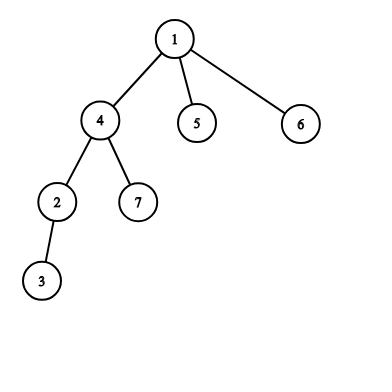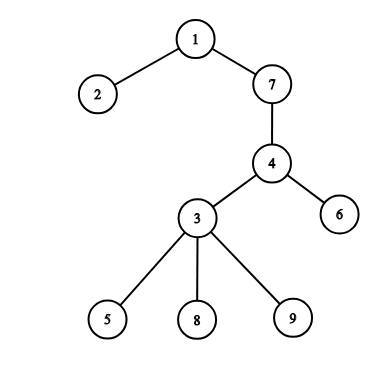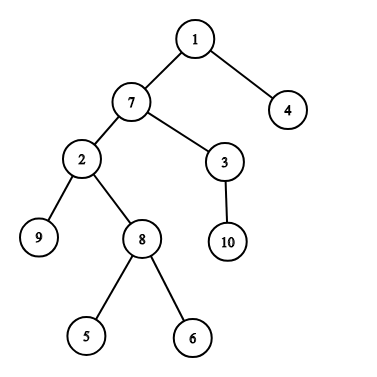Choosing Two Paths
题意翻译
给出一个无根树,请从中选取$2$条链,其中任何一条链的端点不能被另一条链包含,请求出符合题意的链对,并使这两条链的公共的点的部分最长,在此基础上链长的和最大。
***inout***
>给出这颗无根树
***output***
>分别输出这两条链的端点。
题目描述
You are given an undirected unweighted tree consisting of $ n $ vertices.
An undirected tree is a connected undirected graph with $ n - 1 $ edges.
Your task is to choose two pairs of vertices of this tree (all the chosen vertices should be distinct) $ (x_1, y_1) $ and $ (x_2, y_2) $ in such a way that neither $ x_1 $ nor $ y_1 $ belong to the simple path from $ x_2 $ to $ y_2 $ and vice versa (neither $ x_2 $ nor $ y_2 $ should not belong to the simple path from $ x_1 $ to $ y_1 $ ).
It is guaranteed that it is possible to choose such pairs for the given tree.
Among all possible ways to choose such pairs you have to choose one with the maximum number of common vertices between paths from $ x_1 $ to $ y_1 $ and from $ x_2 $ to $ y_2 $ . And among all such pairs you have to choose one with the maximum total length of these two paths.
It is guaranteed that the answer with at least two common vertices exists for the given tree.
The length of the path is the number of edges in it.
The simple path is the path that visits each vertex at most once.
输入输出格式
输入格式
The first line contains an integer $ n $ — the number of vertices in the tree ( $ 6 \le n \le 2 \cdot 10^5 $ ).
Each of the next $ n - 1 $ lines describes the edges of the tree.
Edge $ i $ is denoted by two integers $ u_i $ and $ v_i $ , the labels of vertices it connects ( $ 1 \le u_i, v_i \le n $ , $ u_i \ne v_i $ ).
It is guaranteed that the given edges form a tree.
It is guaranteed that the answer with at least two common vertices exists for the given tree.
输出格式
Print any two pairs of vertices satisfying the conditions described in the problem statement.
It is guaranteed that it is possible to choose such pairs for the given tree.
输入输出样例
输入样例 #1
7
1 4
1 5
1 6
2 3
2 4
4 7
输出样例 #1
3 6
7 5
输入样例 #2
9
9 3
3 5
1 2
4 3
4 7
1 7
4 6
3 8
输出样例 #2
2 9
6 8
输入样例 #3
10
6 8
10 3
3 7
5 8
1 7
7 2
2 9
2 8
1 4
输出样例 #3
10 6
4 5
输入样例 #4
11
1 2
2 3
3 4
1 5
1 6
6 7
5 8
5 9
4 10
4 11
输出样例 #4
9 11
8 10
说明
The picture corresponding to the first example: 
The intersection of two paths is $ 2 $ (vertices $ 1 $ and $ 4 $ ) and the total length is $ 4 + 3 = 7 $ .
The picture corresponding to the second example: 
The intersection of two paths is $ 2 $ (vertices $ 3 $ and $ 4 $ ) and the total length is $ 5 + 3 = 8 $ .
The picture corresponding to the third example: 
The intersection of two paths is $ 3 $ (vertices $ 2 $ , $ 7 $ and $ 8 $ ) and the total length is $ 5 + 5 = 10 $ .
The picture corresponding to the fourth example: 
The intersection of two paths is $ 5 $ (vertices $ 1 $ , $ 2 $ , $ 3 $ , $ 4 $ and $ 5 $ ) and the total length is $ 6 + 6 = 12 $ .